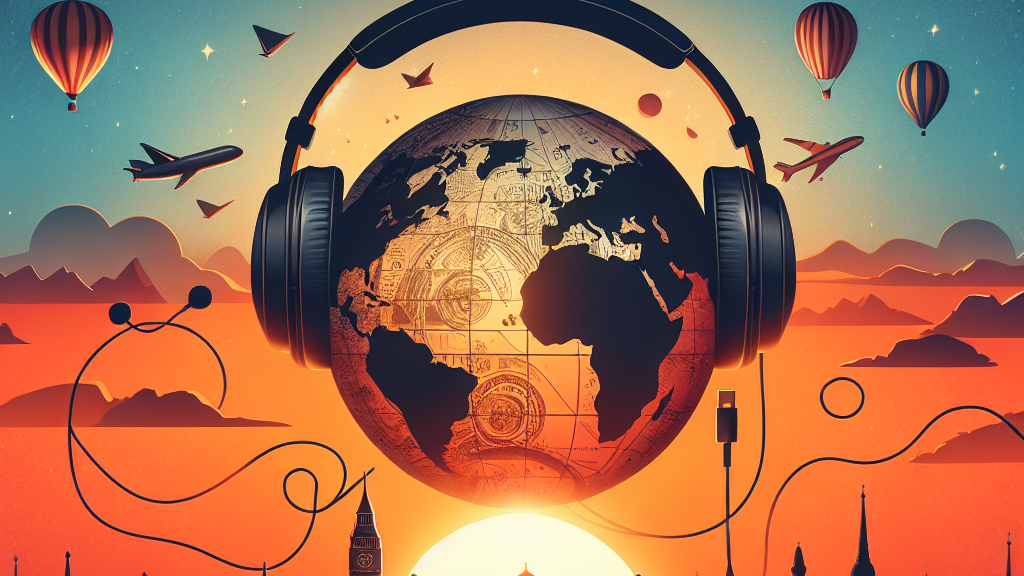So, you’re gearing up for your next adventure and one item you absolutely need is the perfect travel backpack. But with so many options out there, how do you know what to look for? Don’t worry, we’ve got you covered. In this article, we’ll give you some handy tips and guidance on how to choose the perfect travel backpack that will meet all your needs and make your journey a breeze. From size and weight to comfort and organization, we’ll help you find the ideal backpack to accompany you on your wanderlust-filled escapades. So, let’s get started and find you the backpack of your dreams!
Size
Consider the Purpose of Your Trip
When choosing a travel backpack, the first thing you need to consider is the purpose of your trip. Are you embarking on a short weekend getaway or planning a long-term backpacking adventure? Knowing the duration of your trip will help you determine the size of the backpack you need. A weekend trip may only require a small backpack, while a longer trip may require a larger one to accommodate all your belongings.
Assess Your Personal Needs
Next, assess your personal needs. Do you prefer to travel with just the essentials or do you like to have a variety of options? Consider the types of activities you’ll be engaging in during your trip and the specific items you’ll need. If you’re going hiking, for example, you may need space for hiking boots and extra layers. By assessing your personal needs, you can choose a backpack that will comfortably accommodate everything you require.
Think about the Luggage Restrictions
It’s important to think about the luggage restrictions imposed by your chosen mode of transportation or any specific regulations in the destinations you’ll be visiting. Some airlines have weight limits for carry-on bags, while others may allow larger backpacks as long as they meet certain size restrictions. By considering the luggage restrictions, you can select a backpack that complies with these limitations and avoids the hassle of having to check in your bag or pay for extra fees.
Design
Choose the Right Type of Backpack
There are several types of backpacks to choose from, each designed for different purposes. Daypacks are small and lightweight, perfect for day trips or short outings. Travel backpacks, on the other hand, are designed to hold more and are suitable for longer trips. Additionally, there are specialized backpacks for activities such as hiking or cycling. Consider the type of trip you’ll be undertaking and choose a backpack that aligns with your specific needs.
Consider the Closure System
The closure system of a backpack plays an important role in keeping your belongings secure. There are various closure systems available, including zippers, drawstrings, and buckles. Zippers are the most common and provide easy access to the main compartment. Drawstrings with top flaps offer added security against water or dirt. Buckles, especially those with adjustable straps, provide a more durable and secure closure system. Consider your preference and the level of security you require when choosing a closure system.
Look for Padded Shoulder Straps and Back Support
Comfort is key when it comes to choosing a travel backpack, and padded shoulder straps and back support are essential for long hours of wear. Look for backpacks with thick, cushioned shoulder straps that distribute the weight evenly across your shoulders. Additionally, backpacks with padded back panels offer increased comfort and prevent discomfort from items pressing against your back. Prioritizing padded shoulder straps and back support will ensure that you can comfortably carry your backpack for extended periods without strain.
Check for Compression Straps
Compression straps are a useful feature to look for in a travel backpack. These straps help compress the contents of your backpack, making it more compact and preventing items from shifting during transit. They also allow you to adjust the size of your backpack according to your needs. Compression straps are particularly beneficial if you’re carrying a partially filled backpack, as they minimize bulk and keep your belongings secure and organized.
Consider the Accessibility of Pockets and Compartments
Having easy access to your belongings while on the go is crucial, especially when traveling. Look for backpacks with multiple pockets and compartments, both internal and external, to ensure easy organization and access to your essentials. Internal pockets are perfect for storing valuables, such as your passport or wallet, while external pockets are ideal for items you need to reach quickly, such as a water bottle or snacks. Consider your daily requirements and choose a backpack with the right balance of accessible pockets and compartments.
Durability
Materials and Construction
When it comes to durability, the materials and construction of a travel backpack are vital factors to consider. Look for backpacks made from high-quality materials, such as ripstop nylon or durable polyester, which are known for their strength and resistance to tears. Additionally, check the stitching and seams of the backpack to ensure they are reinforced and well-constructed. A well-built backpack will withstand the rigors of travel and last for years to come.
Water Resistance
Traveling often exposes you to various weather conditions, including rain and snow. Therefore, choosing a water-resistant backpack is essential to protect your belongings from getting wet. Look for backpacks with water-resistant materials or those treated with a water-repellent coating. This will help keep your belongings dry and prevent water damage. Some backpacks also come with a rain cover, which provides an extra layer of protection during heavy rainfall.
Reinforced Stress Points
The stress points of a backpack, such as the straps and attachment points, can undergo significant strain during travel. To ensure durability, look for backpacks with reinforced stress points. These areas should be reinforced with additional stitching or reinforced patches to prevent them from tearing or fraying. By choosing a backpack with reinforced stress points, you can have peace of mind knowing that it will withstand the demands of your travels.
Comfort
Weight Distribution and Load Support
A comfortable backpack should distribute the weight evenly across your body, reducing strain on your shoulders and back. Look for backpacks with a supportive suspension system that effectively transfers the weight to your hips. This allows you to carry heavy loads without placing excessive pressure on your shoulders. Additionally, adjustable straps and load lifters provide further customization to ensure a comfortable fit.
Adjustability
Everyone’s body is different, so having an adjustable backpack is essential for achieving a comfortable fit. Look for backpacks with adjustable shoulder straps, sternum straps, and hip belts. These features allow you to customize the fit according to your body size and shape, ensuring optimal comfort. Having an adjustable backpack not only prevents uncomfortable pressure points but also promotes proper posture and weight distribution.
Breathable and Moisture-Wicking Materials
Traveling can be hot and sweaty, especially in tropical climates or during strenuous activities. To stay comfortable, choose a backpack made from breathable and moisture-wicking materials. These materials allow air to circulate and help wick away sweat, keeping you cool and dry. Backpacks with mesh panels or foam padding covered with moisture-wicking fabric are excellent options for enhanced comfort during your travels.
Padded Waist Straps and Sternum Straps
For added comfort and stability, look for backpacks with padded waist straps and sternum straps. The padded waist straps help distribute the weight to your hips, reducing strain on your shoulders. They also provide additional support and prevent the backpack from bouncing around while you walk or hike. Sternum straps, on the other hand, help stabilize the backpack and prevent it from shifting during movement. Both features contribute to a more comfortable and secure fit.
Security
Lockable Zippers
Ensuring the security of your belongings is crucial when traveling. Look for backpacks with lockable zippers, preferably with lockable sliders. This allows you to secure the main compartment and prevent unauthorized access to your belongings. Some backpacks also have locking tabs or loops that can accommodate external locks, providing an extra layer of security. Lockable zippers give you peace of mind, knowing that your valuables are protected against theft.
Hidden Pockets
Hidden pockets are a great feature to look for in a travel backpack, especially if you’re concerned about pickpocketing or keeping your valuables discreet. Hidden pockets are typically located on the back panel of the backpack, making them less accessible to potential thieves. They provide a secure and inconspicuous place to store your passport, cash, or other valuable items. Having hidden pockets in your backpack adds an extra layer of security while you’re on the move.
RFID Protection
In today’s digital age, protecting your personal information is crucial. RFID (Radio Frequency Identification) technology is used in passports, credit cards, and other identification documents. Unfortunately, it can make you vulnerable to identity theft if not properly protected. Look for backpacks with RFID-blocking pockets or compartments. These pockets have a special lining that creates a shield, preventing unauthorized scanning of your RFID-enabled items. Prioritizing RFID protection helps safeguard your personal information during your travels.
Organization and Accessibility
Main Compartment Design
The main compartment of your travel backpack should be designed for easy organization and accessibility. Look for backpacks with multiple compartments or dividers to separate your belongings. This allows you to keep items organized and prevents them from shifting during transit. Additionally, backpacks with a wide-mouth opening or clamshell design provide easy access to the entire main compartment, making it easier to find and retrieve your items.
External Pockets and Attachments
External pockets and attachments are essential for quick and easy access to frequently used items. Look for backpacks with external pockets for storing items such as water bottles, umbrellas, or travel documents. These pockets should be easily accessible without having to open the main compartment of the backpack. Additionally, attachment points such as loops or daisy chains are useful for attaching and securing gear such as trekking poles or carabiners.
Laptop and Tech Accessories
If you’re traveling with a laptop or other electronic devices, it’s important to choose a backpack with dedicated compartments or sleeves for secure storage. Look for backpacks with padded laptop compartments that provide additional protection against bumps and shocks. Some backpacks also have separate compartments for tablets or smaller gadgets. Having these dedicated compartments ensures that your devices remain safe and easily accessible while you’re on the move.
Versatility
Convertible or Detachable Daypack
For added versatility, consider choosing a travel backpack with a convertible or detachable daypack. A convertible daypack is a smaller backpack that can be zipped or attached to the front of your main backpack, providing extra storage space and easy access to essentials. A detachable daypack, on the other hand, can be completely separated from the main backpack, allowing you to use it as a standalone bag for shorter outings. Having a convertible or detachable daypack gives you the flexibility to adapt to different travel situations.
Carry-On Compatibility
If you’re planning to travel by air, it’s important to choose a backpack that meets carry-on size restrictions. Many airlines have specific dimensions and weight limitations for carry-on bags. Ensure that your chosen backpack complies with these restrictions to avoid the hassle of checking in your bag or paying extra fees. Carry-on compatible backpacks are also convenient as they allow you to keep your belongings with you at all times, reducing the risk of loss or damage.
Attachment Points for Additional Gear
If you’re an adventure traveler or planning outdoor activities, having attachment points on your backpack is essential. Look for backpacks with loops, daisy chains, or MOLLE webbing that allow you to attach additional gear, such as sleeping bags, trekking poles, or helmets. These attachment points provide versatility and expand the functionality of your backpack. Whether you’re exploring the wilderness or navigating through the city, having attachment points ensures that you can carry all the gear you need.
Weight
Consider the Weight of the Empty Backpack
When selecting a travel backpack, it’s important to consider the weight of the backpack itself. A lightweight backpack will prevent unnecessary strain on your body, especially if you’ll be carrying it for extended periods. Look for backpacks made from lightweight materials without sacrificing durability. By choosing a lightweight backpack, you can focus on packing your essentials without being burdened by the additional weight of the bag itself.
Pack Light and Minimize Unnecessary Items
One of the key factors in ensuring a comfortable travel experience is packing light. The weight of your backpack directly correlates with your comfort level. By packing only the essentials and minimizing unnecessary items, you can reduce the overall weight of your backpack. Prioritize versatile clothing items and consider laundry options while on the go. Additionally, opt for travel-sized toiletries and lightweight accessories. A light and well-organized backpack will make your travels more enjoyable and hassle-free.
Style
Choose a Backpack That Fits Your Style
Traveling is a personal experience, and your backpack should reflect your individual style and personality. Choose a backpack that aligns with your aesthetic preferences. Whether you prefer a sleek and minimalist design or a vibrant and eye-catching pattern, there are backpacks available in various styles and colors to suit your taste. By selecting a backpack that matches your style, you’ll feel more confident and comfortable during your travels.
Consider the Color and Design
In addition to style, consider the color and design of your travel backpack. Opting for a darker color, such as black or gray, can help conceal dirt and stains, making your backpack look cleaner and more presentable. On the other hand, brighter colors or patterns can make it easier to spot your backpack in crowded settings or on baggage carousels. Consider the practicality and visibility of different color options when making your decision.
Price
Set a Budget
When shopping for a travel backpack, it’s important to set a budget. Travel backpacks come in a wide range of prices, from budget-friendly options to high-end brands. Determine how much you’re willing to spend and prioritize the features that are most important to you. It’s essential to find a balance between cost and quality to ensure that you’re getting the best value for your money.
Consider the Value for Money
While price is an important consideration, it’s equally important to consider the value for money. Look for backpacks that offer a combination of durability, functionality, and comfort within your budget. Assess the quality of the materials and construction, as well as the provided features. Compare different brands and models to find a backpack that offers the best value for your investment. Remember, a well-made and reliable travel backpack is an investment in your comfort and convenience during your trips.
In conclusion, choosing the perfect travel backpack involves careful consideration of various factors. Size, design, durability, comfort, security, organization and accessibility, versatility, weight, style, and price are all important aspects to evaluate. By understanding your specific needs and preferences, you can select a travel backpack that meets your requirements and enhances your travel experience. Remember to prioritize comfort, durability, and functionality while staying within your budget. With the right travel backpack, you’ll be prepared for any adventure that comes your way.









